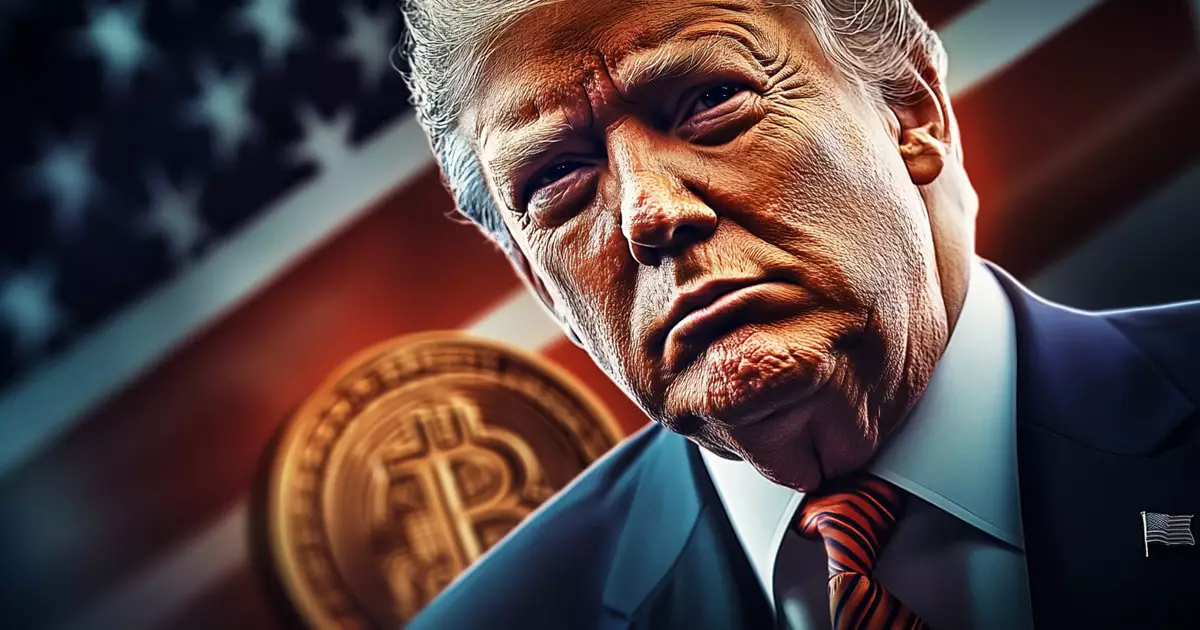In a notable deviation from earlier plans, the Trump administration appears to be shifting away from the concept of a formalized cryptocurrency council. Instead, reports have emerged suggesting a preference for informal summits with leading figures from the crypto industry. This transition aims to create a more organic dialogue focused on pressing policy issues impacting the ever-evolving landscape of digital currencies. The potential agenda for these summits could encompass topics including banking, payment systems, data management, and Bitcoin (BTC) mining, albeit details surrounding their frequency and structure remain murky.
The pivot to informal gatherings signifies a recognition of the complex and often contentious backdrop within the crypto sector. The industry is rife with ideological divisions that complicate unified action. Tensions are evident between proponents of centralized systems and their decentralized counterparts, Bitcoin purists and advocates of alternative cryptocurrencies. Furthermore, individuals within the sector are often at odds over their visions for integrating crypto into the broader financial framework. By opting for informal summits, the administration aims to foster a less adversarial environment conducive to constructive dialogue.
Proponents of this new strategy tout its flexibility as a significant advantage. The diverse lineup of industry leaders expected to participate could lead to meaningful discussions tailored to specific issues. By engaging with well-versed professionals in subject areas such as trading platforms or Bitcoin mining, these informal meetings hold the potential to yield innovative insights and solutions. As one source posited, it is reasonable to consult exchanges about their challenges and miners about the unique facets of their domain, thereby ensuring that discussions are grounded in real-world experience.
However, the reception among industry insiders has been far from unanimous. Some view the shift to a summit approach as a convenient means of avoiding contentious debates that often characterize structured policy discussions. Skeptics warn that these gatherings may amount to little more than surface-level conversations lacking the depth necessary for substantive policy formulation. This concern is exacerbated by allegations expressing that Trump’s motivations may be more self-serving than altruistic. Specifically, there are insinuations that the administration’s interest in these summits could be driven by a desire to gather insights that could bolster Trump’s financial interests rather than serve the broader crypto community.
Historical Context and Previous Initiatives
The contemplation of a crypto council is not entirely new; it was first hinted during Trump’s electoral campaign, where he envisioned a collaborative effort involving regulatory bodies and industry stakeholders. This was to culminate in a regulatory framework designed to streamline the enforcement and oversight of digital currencies. Previous reports indicated interest from leaders within notable companies such as Coinbase, Ripple, Kraken, and Circle, highlighting the desire for industry input in shaping future policy directions.
An executive order signed on January 23, which initiated the “Presidential Working Group on Digital Asset Markets,” heralded the formal endeavor for a crypto council. This body was expected not only to tackle regulatory frameworks but also to explore the potential establishment of a digital asset stockpile with a focus on Bitcoin. The designation of David Sacks as the “White House AI & Crypto Czar” further illustrated the administration’s intent to consolidate influence over the rapidly advancing crypto ecosystem.
Navigating the complexities of the cryptocurrency sector presents a formidable challenge. With countless stakeholders representing diverse interests, achieving consensus on vital issues can often be elusive. Should the administration proceed with informal summits, it will need to balance the competing desires and viewpoints within the crypto community while fostering an environment where productive dialogue can thrive.
The success or failure of this initiative will hinge on its ability to transcend mere information gathering and transform into actionable policy development, ensuring that the diverse voices within the industry contribute to meaningful regulatory frameworks. The evolving strategy might reflect an adaptive approach in an industry characterized by rapid change, but whether it will effectively mitigate conflicts or generate real policy solutions remains to be seen. As the crypto landscape continues to mature, stakeholders eagerly await clarity on how these proposed engagements will shape the future of digital asset governance.


Leave a Reply